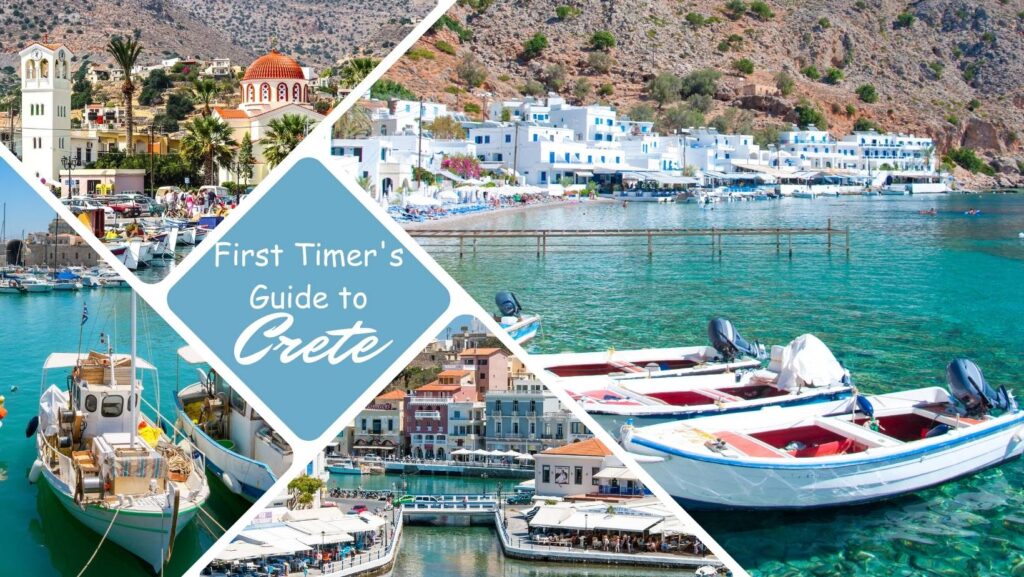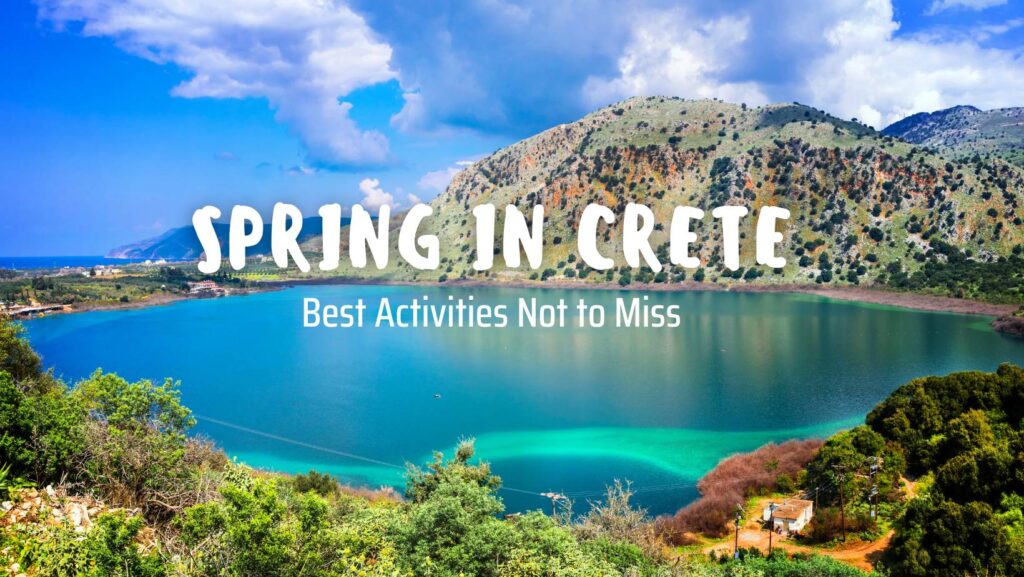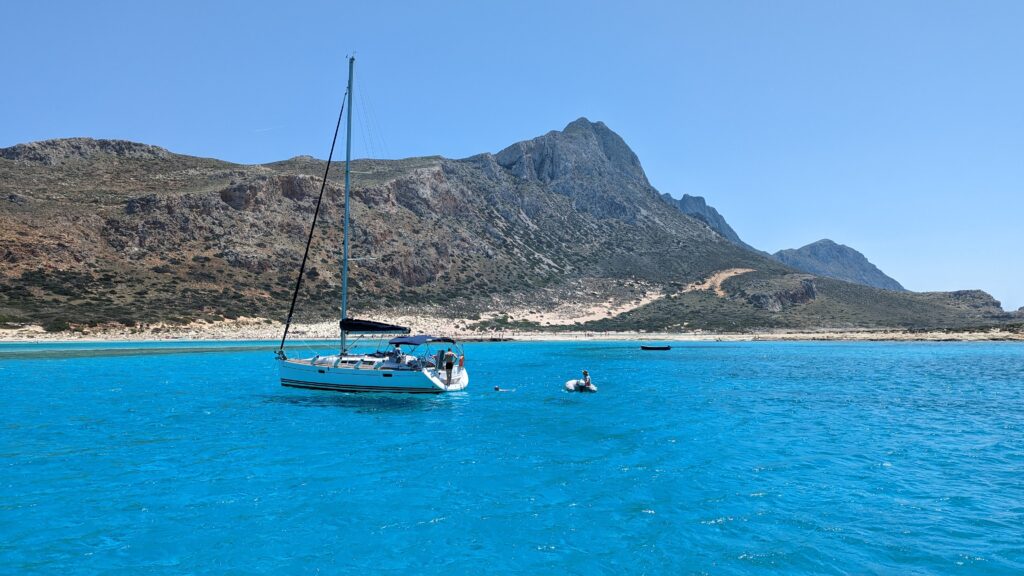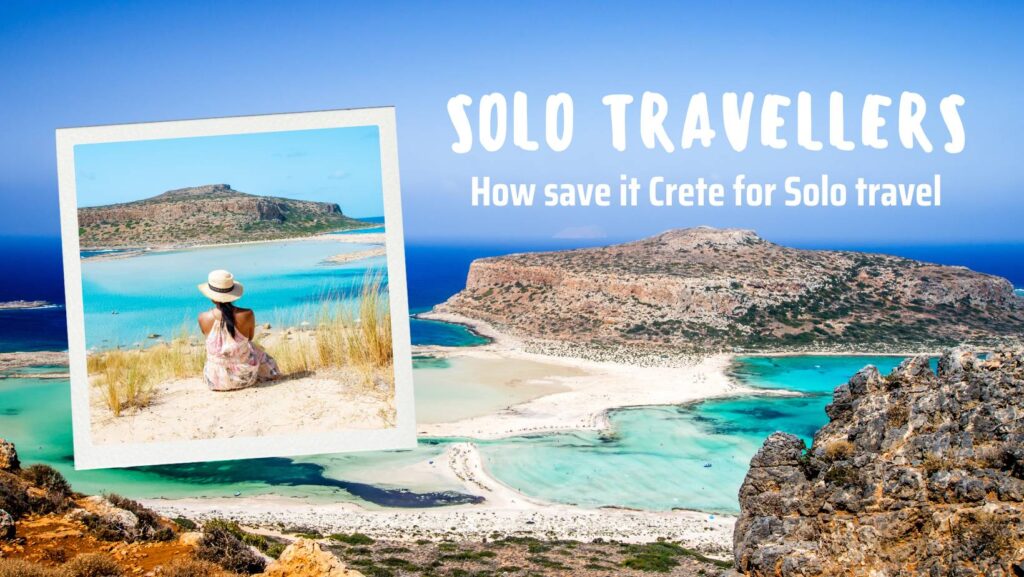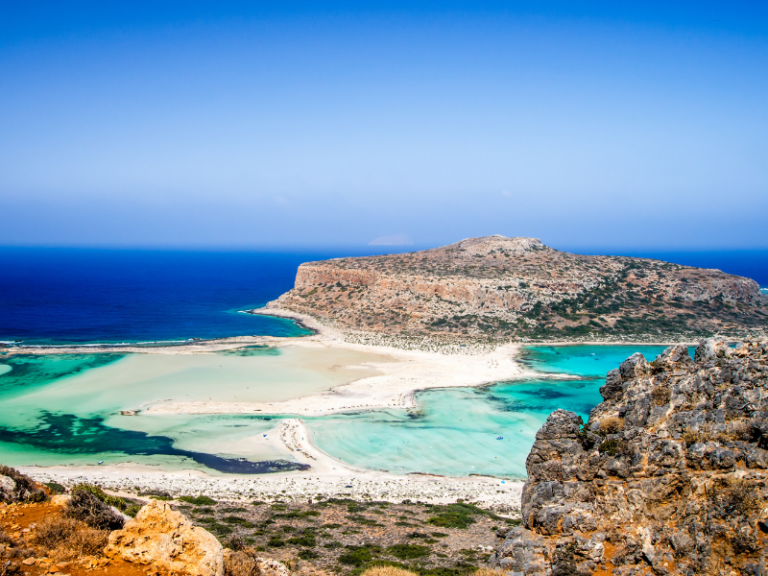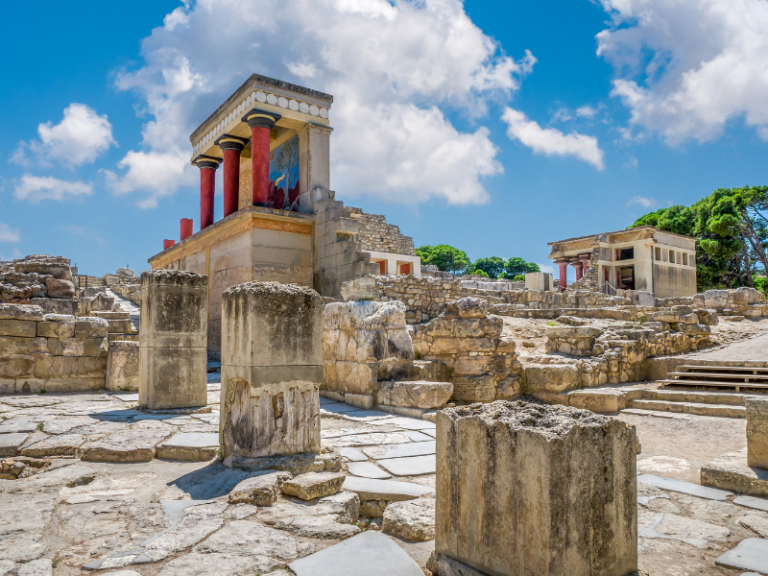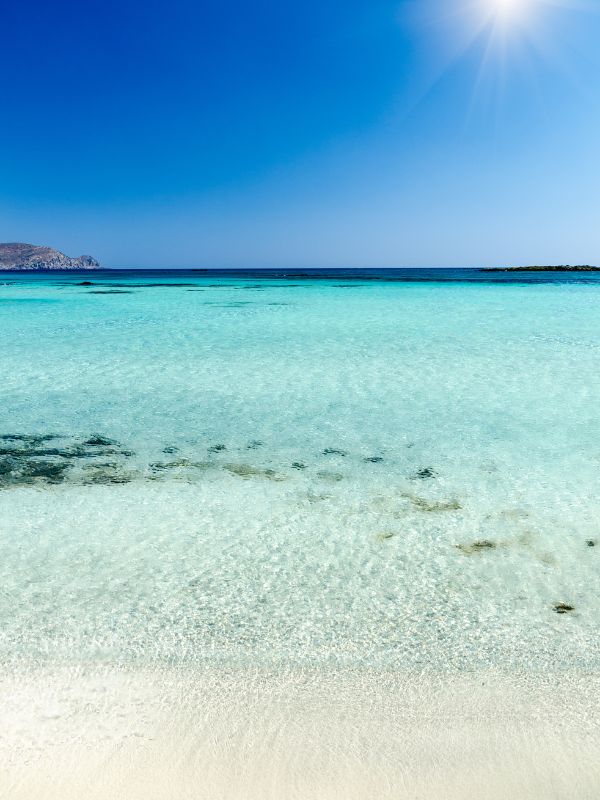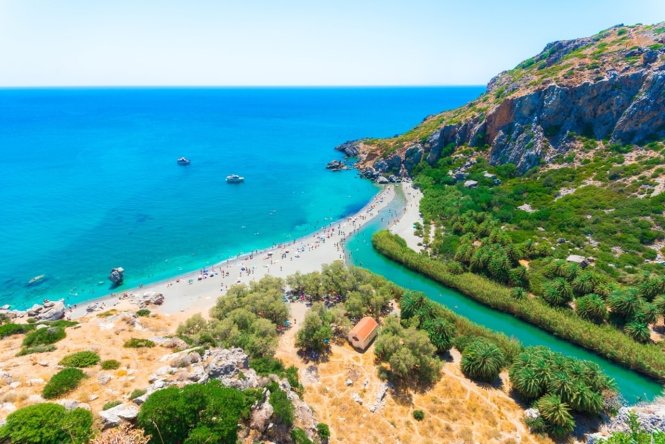First Time in Crete: 5 Essential Insights for an Unforgettable Journey
- Posted 2 weeks ago
- Crete
Table of Contents
First time in Crete? Welcome to the largest Greek island, a mesmerizing fusion of stunning landscapes, rich history, and vibrant culture. Here, you’ll find everything from serene beaches and lush countryside to ancient sites and lively urban centers. Crete invites you on a journey of discovery and enchantment, where natural beauty and historical marvels await at every turn.
Crete Through the Ages
Crete’s extensive history is deeply intertwined with its strategic location, serving as a pivotal junction for Western Europe, the Middle East, and North Africa. During its Golden Age, this position fostered immense prosperity through trade; numerous archaeological sites across the island attest to significant historical events. The discovery of the oldest human remains in Crete, dating back to the 7th century BC, highlights its ancient human activity. Initially, Neolithic hunter-gatherers from Asia Minor settled here, transitioning to farming and establishing households in the Messará plain. A significant migration around 3000 BC introduced a more advanced population with new techniques, marking the commencement of the Minoan era – Europe’s first major civilization.
ALSO READ: A Short History of Crete: From Minoan Civilization to Modern Times
1. First Time in Crete: When is the Best Time to Visit

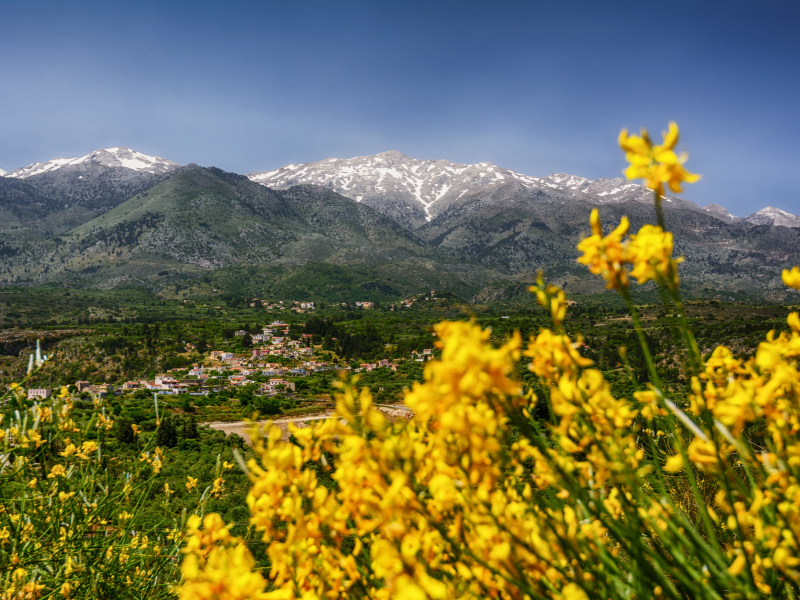
Crete’s delightful climate and stunning beaches have cemented its reputation as an ideal summer getaway. The peak of this season falls in June and August, when the island basks in endless sunshine and warm temperatures, perfect for beach enthusiasts looking for their spot in the sun.
However, this peak season also brings the largest crowds and the highest prices across the island. Yet, thanks to Crete’s expansive size and the plethora of charming cities and towns, the influx of visitors doesn’t overwhelm the island’s resources. Even during these bustling months, finding accommodation or renting a car remains relatively hassle-free, providing a comfortable holiday experience without the congestion seen on smaller Greek islands.
For those with flexible travel plans not tied to the peak beach weather, the shoulder seasons of late spring (mid-April and May) and early fall (mid-September through October) present a golden opportunity. During these times, Crete enjoys a cooler yet still beach-friendly climate, fewer tourists, and more affordable prices. This period is particularly appealing for those interested in exploring Crete’s rich urban and natural landscapes, as well as its archaeological treasures, without the summer’s dense crowds. Whether it’s lounging on a beach or delving into the island’s history, visiting Crete outside the peak season can offer a more relaxed and enriching experience for those on their first time in Crete.
ALSO READ: Spring in Crete: 5 Best Activities Not to Miss
2. How to Get to Crete Island

Crete is well-connected to Europe and beyond, offering direct flights from many European cities. International visitors often fly into Athens or another European hub before continuing to Crete. For those within Greece, Crete is accessible by both air and sea from Athens, with additional air connections from Thessaloniki.
Ferries from Athens’ Piraeus port sail to Crete several times daily, particularly in summer, reaching destinations like Heraklion, Chania (and Sitia once a week) in 6.5 to 9 hours. Overnight ferries are an option for a comfortable journey, with cabin bookings recommended. Prices for ferry tickets range from €40 to €150, depending on the timing and class of service.
Air travel from Athens to Crete is frequent, with multiple daily flights to Chania and Heraklion airports at competitive prices, starting as low as €30 for a one-way ticket. Thessaloniki also offers regular flights to these airports, making Crete easily accessible from northern Greece through budget-friendly air travel options.
3. First Time in Crete: How Many Days to Truly Experience the Island
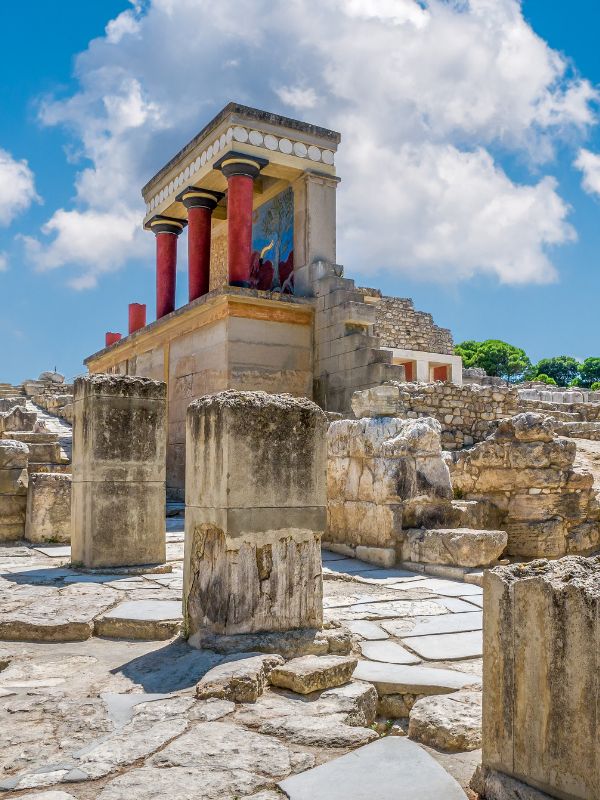
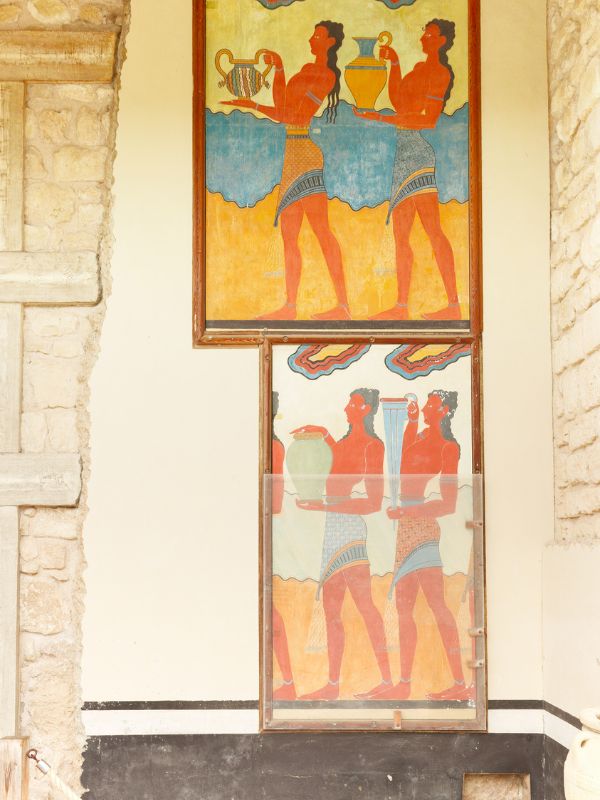
Allocating 7 to 10 days for a trip to Crete offers the perfect balance for first-timers eager to dive into the island’s rich tapestry of history, culture, natural landscapes, and stunning coastlines. This timeframe allows for an immersive exploration, providing enough flexibility to journey across various regions of the island without feeling rushed.
Within this period, visitors have the opportunity to embark on a diverse array of adventures. From delving into the ancient mysteries of the Palace of Knossos and the Heraklion Archaeological Museum to strolling through the enchanting streets of Chania and Rethymno, and embracing the natural beauty of the Samaria Gorge and the White Mountains. Leisurely days can also be spent lounging on the pristine beaches of Elafonissi and Balos Lagoon, offering a well-rounded experience of Crete’s offerings.
ALSO READ: 10 Unforgettable Road Trip Ideas from Chania or Rethymno
Opting for the full 10-day visit allows for a more laid-back itinerary, where the journey unfolds at a leisurely pace, inviting deeper connections with Crete’s landscapes and locals. This duration not only accommodates visits to well-known sites but also offers the chance to venture into lesser-known villages, enriching your travel experience. Embracing Crete’s relaxed rhythm and hospitable spirit enhances the enjoyment and depth of your stay, making every moment on the island truly memorable.

4. Where to Stay in Crete: First Time in Crete Itinerary
For travelers planning a trip to Crete shorter than 7 days, choosing accommodations in or close to the major cities of Chania, Heraklion, Rethymno, and Agios Nikolaos is wise. Staying near these urban centers makes it easier to explore the island’s sights, soak up the sun on beautiful beaches, and minimizes the need for lengthy car journeys.

However, to fully experience the island’s varied landscapes and cultural offerings, a stay of 7 to 10 days is advisable, allowing you to move beyond just one location. Shifting your base throughout your stay enhances your ability to see more of Crete’s beauty. A well-rounded 7-day itinerary could include starting with 2 nights in Heraklion, moving on to 2 nights in Rethymno, and finishing with 3 nights in Chania.
For those extending their visit to 10 days, it’s a great opportunity to explore the eastern Lasithi region or delve into the island’s southern reaches. This plan can be tailored to align with where you first land on the island, ensuring it fits seamlessly with your travel itinerary.
2 Night: Heraklion -The Island’s Bustling Capital

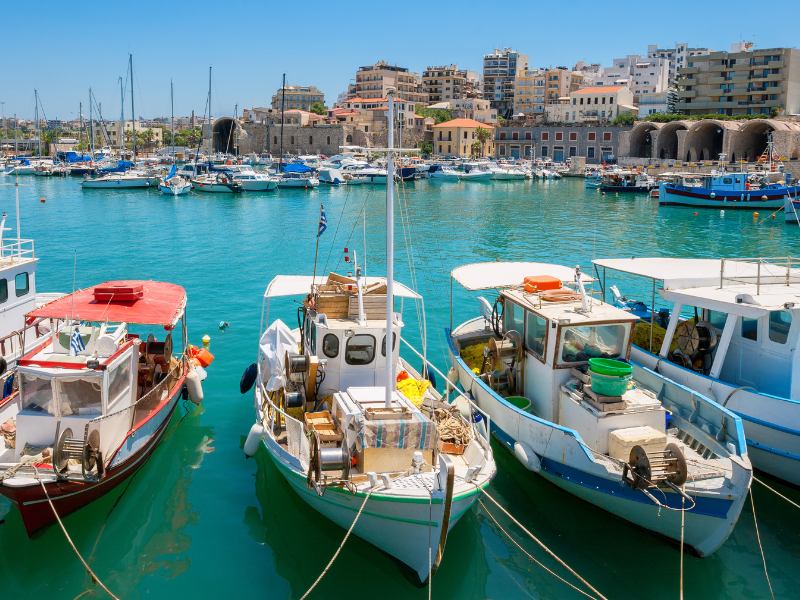
Heraklion, Crete’s largest city, is steeped in history and brimming with activities, a must visit place for the your first time in Crete. Its central location grants easy access to archaeological sites, medieval architecture, and vibrant neighborhoods. Just an hour’s drive from the city, visitors can explore enchanting villages, coastal towns, and picturesque landscapes, making it a prime spot for those wishing to delve into Crete’s rich heritage and natural beauty.
2 Night: Rethymno – A Blend of Medieval Charm and Natural Splendor

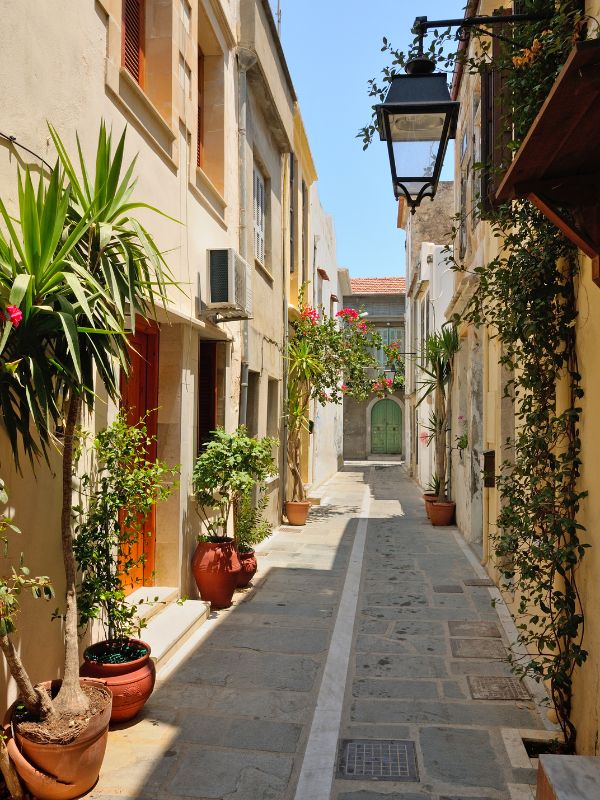
Rethymno offers a captivating old-world charm with its well-preserved medieval architecture, including Venetian fortifications and Ottoman mosques. The city’s harbor is a lively spot for dining and enjoying the scenic comings and goings of boats. Surrounding Rethymno, the countryside reveals quaint villages, stunning beaches like Preveli beach, along with opportunities for historical exploration as Arkhadi Monastery and hiking in the breathtaking Kourtaliotiko Gorge.
ALSO READ: 10 Unforgettable Road Trip Ideas from Chania or Rethymno
3 Night: Chania – A Glimpse into Crete’s Venetian Past
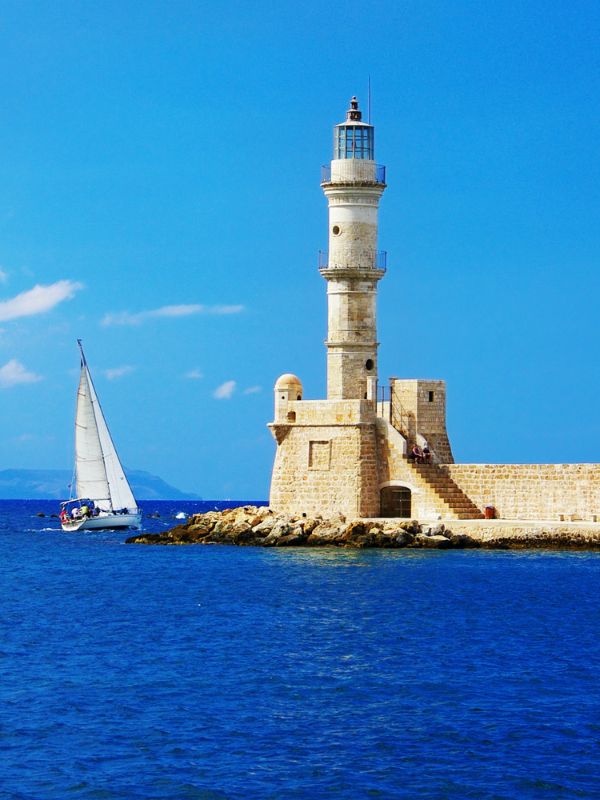

Often likened to the “Venice of the East” Chania is a jewel in Crete’s crown, that must be on your list for your first time in Crete. Chania is renowned for its picturesque Old Town and historic Venetian Harbor. A stroll through Chania unveils a tapestry of architectural styles, bearing witness to the myriad cultures that have shaped its history. Beyond the city, adventures await in the Akrotiri Peninsula, Balos Lagoon, Falassarna beach, ancient Aptera, and the majestic Samaria Gorge, offering a blend of cultural and natural wonders for explorers.
(2-3 Nights): Agios Nikolaos and Elounda – Charming Towns in Eastern Crete

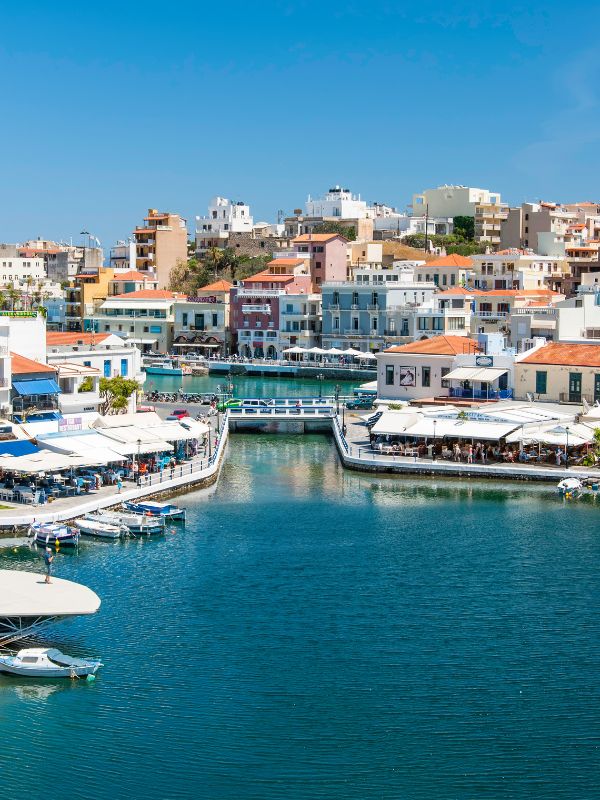
In the final 2-3 days of your Crete journey, consider making the charming towns of Agios Nikolaos and Elounda in the Lasithi region your base to explore eastern Crete. Both towns offer a perfect mix of leisure and exploration, with Agios Nikolaos boasting a lively waterfront and Elounda providing luxurious stays with splendid views of Mirabello Bay. Don’t miss the chance to visit Spinalonga Island, a stone’s throw away by boat, known for its fascinating history as a Venetian fortress and leper colony. This part of your trip combines relaxation with a touch of history, capturing the essence of Crete’s eastern allure.
(2-3 Nights): Loutro – The Authentic Charm of Crete’s South


For an authentic immersion into Crete’s southern charm, dedicating the last 2-3 days of your trip to exploring its less-trodden paths is highly recommended. The quaint village of Loutro, accessible solely by boat from other picturesque southern villages like Sfakia and Paleochora, epitomizes the serene beauty and untouched nature of Crete’s southern coastline.
Loutro, with its tranquil bay and white-washed buildings, serves as an ideal base for those seeking to experience the genuine essence of Crete away from the bustling tourist spots. This part of the island offers a unique blend of breathtaking landscapes, secluded beaches, and the warm hospitality of the local communities, making it a perfect conclusion to a journey of discovery through Crete’s diverse terrains and rich cultural tapestry.
5. Navigating Around Crete: Transportation Options
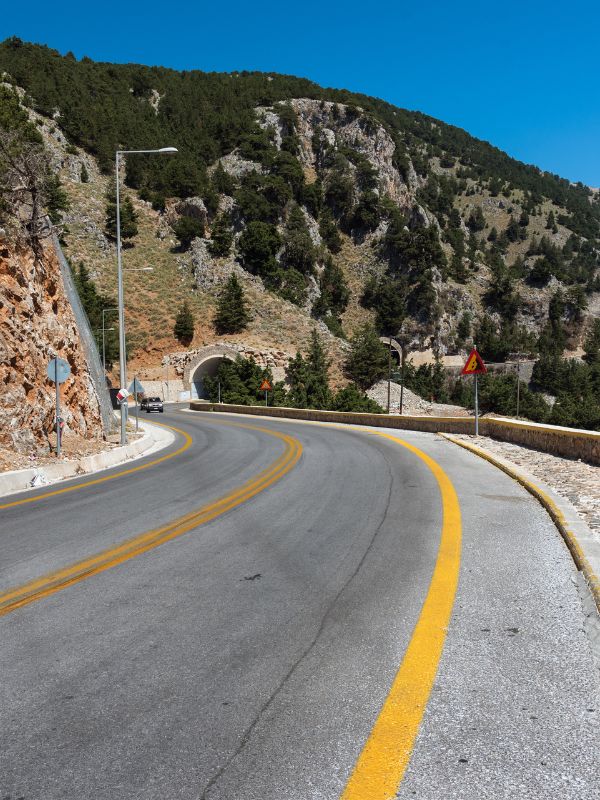

Crete’s expansive landscape is marked by majestic mountains that divide the island, creating a realm of stunning gorges, plateaus, and rich biodiversity waiting to be explored. However, this rugged terrain poses challenges for transportation, making even short journeys potentially time-consuming due to the lack of direct roads and the necessity to navigate around natural obstacles.
To truly appreciate the island’s diverse beauty, it’s advisable to establish a few strategic bases and plan day excursions to nearby attractions. This approach minimizes extensive driving and maximizes your time enjoying Crete’s attractions. The northern “highway” spans the island but expect a journey from one end to the other to take around five hours, without accounting for the time it takes to traverse inland through the winding, mountainous roads.
Car Rental: The Key to Crete’s Hidden Gems
Renting a car is highly recommended to fully experience Crete’s scenic countryside, remote natural wonders, and quaint villages. While public transport exists, having your own vehicle offers unparalleled freedom and convenience for beach outings, hikes, archaeological visits, and more. Car rental services are readily available at airports and major cities, with a variety of options from international and local providers. Be mindful to book early, especially in peak summer months, to secure your preferred vehicle.
Anticipate longer travel times than suggested by navigation apps, due to the island’s narrow and winding roads. Crete’s driving conditions and local driving habits may require some adjustment, but patience and caution ensure a safe journey. Parking in cities and popular beaches can be challenging, so prepare for some flexibility in your plans.
Alternatives: Public Transport and Taxi
For those opting out of car rental, Crete’s public buses connect major cities and towns efficiently, though service frequency may vary. Taxis provide a convenient option for shorter trips, but for longer excursions, consider booking in advance to ensure a return trip.
Concluding your first time in Crete might leave you with a bittersweet realization: as the largest Greek island, capturing all its wonders in a single, short journey is an ambitious task. This magical island, with its tapestry of breathtaking landscapes, rich history, and vibrant culture, demands more than a fleeting glance. For first-timers in Crete, it’s nearly a guarantee that you’ll yearn to return, drawn back time and again by its undeniable charm.
To truly embrace the essence of Crete, we recommend allocating at least 7 to 10 days. This allows you to immerse fully in the island’s enchanting beauty and historical depths. We hope this article has been enlightening, and we encourage you to delve deeper into our website. Here, you’ll discover more about Crete, arming you with knowledge for what promises to be the adventure of a lifetime.
Share your thoughts!
You might be also interested
The Top 8 Things to Do in Crete



- From
- €31.45


- From
- €30.6




